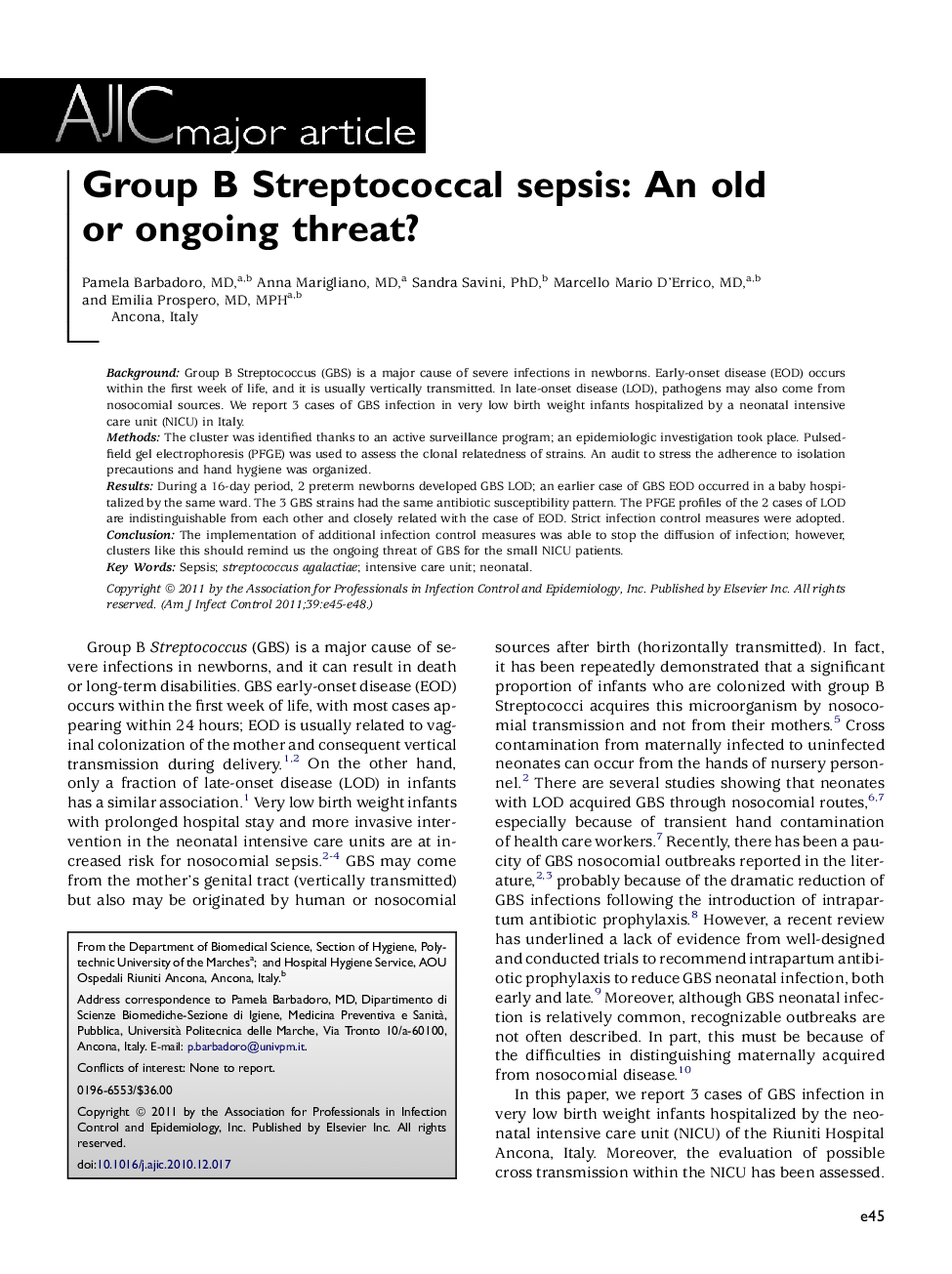| Article ID | Journal | Published Year | Pages | File Type |
|---|---|---|---|---|
| 2637918 | American Journal of Infection Control | 2011 | 4 Pages |
BackgroundGroup B Streptococcus (GBS) is a major cause of severe infections in newborns. Early-onset disease (EOD) occurs within the first week of life, and it is usually vertically transmitted. In late-onset disease (LOD), pathogens may also come from nosocomial sources. We report 3 cases of GBS infection in very low birth weight infants hospitalized by a neonatal intensive care unit (NICU) in Italy.MethodsThe cluster was identified thanks to an active surveillance program; an epidemiologic investigation took place. Pulsed-field gel electrophoresis (PFGE) was used to assess the clonal relatedness of strains. An audit to stress the adherence to isolation precautions and hand hygiene was organized.ResultsDuring a 16-day period, 2 preterm newborns developed GBS LOD; an earlier case of GBS EOD occurred in a baby hospitalized by the same ward. The 3 GBS strains had the same antibiotic susceptibility pattern. The PFGE profiles of the 2 cases of LOD are indistinguishable from each other and closely related with the case of EOD. Strict infection control measures were adopted.ConclusionThe implementation of additional infection control measures was able to stop the diffusion of infection; however, clusters like this should remind us the ongoing threat of GBS for the small NICU patients.
